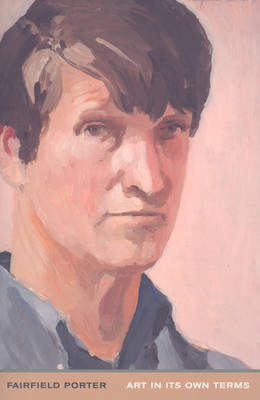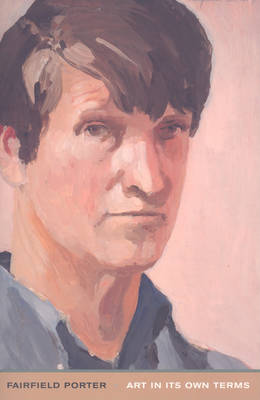
- Afhalen na 1 uur in een winkel met voorraad
- Gratis thuislevering in België vanaf € 30
- Ruim aanbod met 7 miljoen producten
- Afhalen na 1 uur in een winkel met voorraad
- Gratis thuislevering in België vanaf € 30
- Ruim aanbod met 7 miljoen producten
Zoeken
Art in Its Own Terms
Selected Criticism 1935-1975 by Fairfield Porter
Rackstraw Downes
Paperback | Engels
€ 27,95
+ 27 punten
Omschrijving
According to the important American poet John Ashbery, "To read Fairfield Porter is to rediscover art through the eyes of someone whose intuitive love and understanding of it has been matched by few contemporaries," while fellow New York School poet Barbara Guest wrote, "Blunt, intuitive, scholarly, inspired--I believe no other critic has so tackled the meaning of twentieth century art, has tightened our vision of it." Known as one of America's finest and most influential painters, Fairfield Porter (1907-1975) was also a prolific and highly insightful art critic. His writing not only reflects the independent, original mind that presided over his own visual works, but also covers an extraordinary period in American art, in which he played the double role of protagonist and witness. This new edition of Art in Its Own Terms restores to print a key statement in the ongoing discussion between Modern art and its past, as Porter reviews such figures as de Kooning, Johns, Cornell, Rodin, Cézanne, Leonardo and many others. Equally seminal are his considerations of the relations between art and science and art and politics. Rackstraw Downes' introduction beautifully sets the stage for this indispensable and wide-ranging volume.
Specificaties
Betrokkenen
- Auteur(s):
- Uitgeverij:
Inhoud
- Aantal bladzijden:
- 287
- Taal:
- Engels
Eigenschappen
- Productcode (EAN):
- 9780878467433
- Verschijningsdatum:
- 1/12/2008
- Uitvoering:
- Paperback
- Formaat:
- Trade paperback (VS)
- Afmetingen:
- 137 mm x 203 mm
- Gewicht:
- 362 g

Alleen bij Standaard Boekhandel
+ 27 punten op je klantenkaart van Standaard Boekhandel
Beoordelingen
We publiceren alleen reviews die voldoen aan de voorwaarden voor reviews. Bekijk onze voorwaarden voor reviews.








